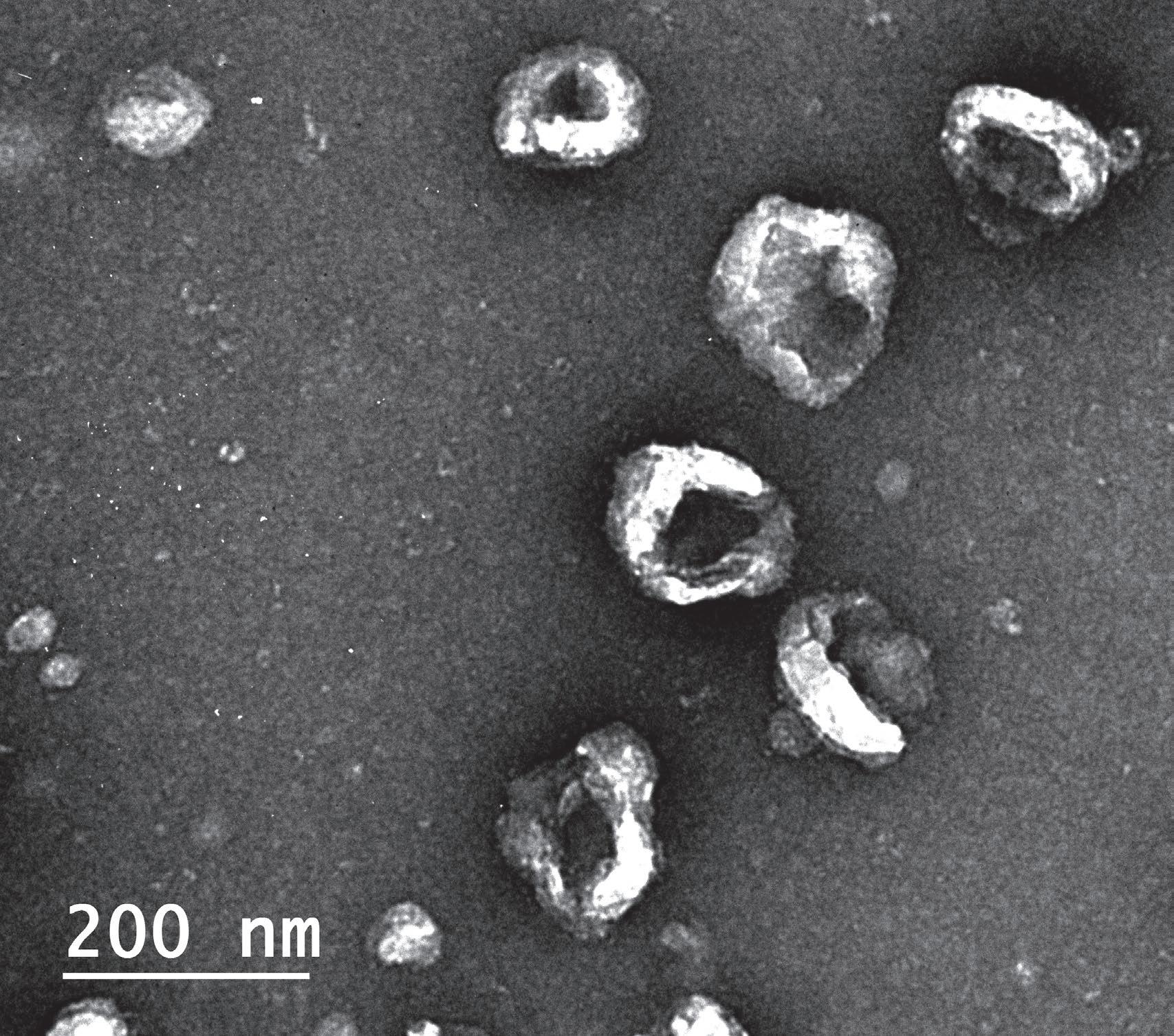
3 minute read
The Miami Project Exercises Bench To
Bedside Potential
With Human Schwann Cell-Derived Exosomes
Ateam of The Miami Project investigators are working on a novel strategy using human Schwann cells to deliver proteins and genetic materials to the injured nervous system as a new therapeutic intervention. The Miami Project has a rich history of working with Schwann cells, one type of neural support cell that helps wrap the exterior of nerve axons in myelin. In doing so Schwann cells play a structural role analogous to insulation, coating the long cylindrical axons of nerves so that impulses are conducted with greater efficiency, speed, and reliability. Researchers at The Miami Project have known for some time that the structure is not Schwann cells’ only function and are now realizing a novel potential through a bench-to-bedside investigation of Schwann cell-derived exosomes.
Exosomes, a kind of extracellular vesicle, are a way by which cells can transport a rich cargo efficiently between one another. The vesicles, that eventually become spheres packed with molecules, begin their journey in an unassuming manner. The cargo that will eventually fill them is manufactured inside the cell, carefully selected for export, and then moved to the surface of the cell. There, a portion of the cell membrane begins to bud away from the cell, is filled with the cargo in the region, and eventually buds off completely. This process is not specific to one cell type, but the contents of the exosomes do contain a unique payload specific to the cells of origin. Furthermore, their exteriors can be labeled with specific markers that might help them find or act on targets of interest to their parent cell.
The robust experience of the team, with manufacturing biologic products that can achieve FDA approval for use in humans, allowed them to dynamically respond to the situation and set the precedent for the use of Schwann cell exosomes for the treatment of a neurological condition.
In the case of Schwann cells, the natural exosome production by which these cells can exchange information with their surroundings occurs at a modest rate. When optimized in an artificial setting, such as a laboratory culture dish, Schwann cells can be made to extrude great amounts of exosomes. Containing the cell-specific cargo, exosomes might be a viable alternative treatment to delivering the whole cells through invasive transplantation procedures. Whole cells are large, can migrate, and must likely stay alive to enact their effects. Exosomes are smaller, but still contain certain naturally occurring cargo of likely biological relevance.
Furthermore, the assortment of internal contents—proteins, RNA, and other molecules—means exosomes have a variety of immediate and longer lasting potential effectors they might act on, increasing the chance for a positive effect including neuroprotection or regeneration. Importantly, there is scientific evidence in other fields that exosomes from certain cells have therapeutic relevance to conditions involving the tissues where the cells play a role. For example, exosomes released by cancer cells can promote tumor growth and metastasis, while exosomes from immune cells can help to fight infections and modulate immune responses. In this manner, Schwann cells that normally play a structural role inside the body might instead be coerced outside the body into becoming pumps, like tiny autonomous pharmaceutical companies manufacturing a drug to be introduced to the body for treatment of a neurological condition.
Such is the goal of W. Dalton Dietrich, Ph.D., Scientific Director of The Miami Project, and a multidisciplinary scientific team, including James D. Guest, M.D., Ph.D., Allan Levi, M.D., Ph.D. Helen M. Bramlett, Ph.D., and Damien D. Pearse, Ph.D., of The Miami Project, and Aisha Khan, Ph.D., of the Interdisciplinary Stem Cell Institute. This group has tuned their Schwann cell exosomes approach using preclinical models of traumatic brain injury and are now gearing up to understand and advance these exosomes in models of spinal cord injury. In parallel to these bench studies, a recent compassionate care case study was conducted in an individual with late-stage amyotrophic lateral sclerosis (ALS). The robust experience of the team, with manufacturing biologic products that can achieve FDA approval for use in humans, allowed them to dynamically respond to the situation and set the precedent for the use of Schwann cell exosomes for the treatment of a neurological condition. The potential for this new therapeutic application is very high and future research will determine how best to utilize this naturally occurring cellular process to treat paralysis and other neurological disorders.







